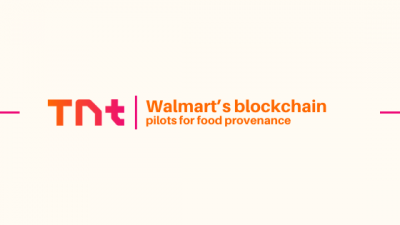
When the team behind LearnScape Academy launched their first online course, they hosted every lesson on Vimeo. It worked until their student base grew across India and Southeast Asia. Videos started buffering, download links leaked, and analytics told them little about how students actually watched.
They’re not alone. Thousands of educators and course creators are now questioning whether Vimeo is built for e-learning at scale.
Once the go-to choice for polished video hosting, Vimeo’s recent shifts in pricing and platform direction have left many creators looking elsewhere for tools built specifically around security, analytics, and seamless learning experiences.
If you’re running an online course, your video platform isn’t just a file host. It’s the foundation of your student experience from how fast videos load to how safely your content stays behind paywalls.
In this guide, we’ll break down the top five Vimeo alternatives for online course creators. Platforms that prioritize speed, privacy, and education-focused features over one-size-fits-all hosting.
Whether you’re running a single cohort-based course or scaling a multi-program academy, these platforms will help you deliver smooth, secure, and measurable video learning at every level.
Why Course Creators Are Moving Away from Vimeo
For years, Vimeo was the go-to solution for educators who wanted cleaner branding and ad-free playback. But as course creators began scaling globally and introducing paid memberships, the cracks started showing.
Price Hikes and Platform Limitations
Vimeo’s pricing changes in recent years have made it harder for educators to scale affordably. Many plans now tie costs to bandwidth usage, meaning creators pay more as their courses succeed. Add to that limited DRM support and basic analytics, and it’s clear why growing academies are outgrowing the platform.
Most online course platforms today need more than just storage, they need a full video delivery infrastructure that ensures every student, from New York to Nairobi, gets the same seamless playback experience.
Security and Piracy Concerns
For paid courses, video security isn’t optional. Course creators need protection against unauthorized downloads and embedding. Vimeo’s standard plans lack advanced tools like dynamic watermarking, signed URLs, and domain-level restrictions. All of which prevent piracy and content leaks.
Educators running premium programs have learned the hard way that one leaked video link can lead to significant revenue loss and brand damage.
The Shift Toward Course-Specific Hosting
Modern course creators want video platforms that integrate directly with their LMS or website, track engagement, and deliver analytics at the viewer level. They also expect flexibility: hosting lessons, quizzes, and supplementary videos in one protected environment.
That’s where dedicated course-focused hosting platforms are stepping in. These solutions combine the reliability of global CDNs with the intelligence of video analytics, purpose-built for learning experiences rather than marketing campaigns.
How to Choose the Right Video Platform for Courses
Finding a Vimeo alternative isn’t about picking a cheaper host, it’s about finding a partner that aligns with how you teach, scale, and protect your content. Course creators today expect their video platform to do much more than stream lessons; it needs to integrate seamlessly with learning systems, deliver real insights, and scale globally without breaking budgets.
Key Evaluation Criteria
Before switching, define what matters most to your learning model.
- Security: Look for features like encryption, domain-restricted embeds, and watermarking to protect paid content.
- Performance: Prioritize platforms with global CDNs and adaptive streaming to ensure smooth playback worldwide.
- Analytics: Choose hosts that show granular data with viewer drop-off points, completion rates, and engagement heatmaps.
- Ease of Integration: A good platform should plug into your LMS, CRM, or automation tools with minimal setup.
These factors directly affect student experience and retention. A single buffering issue or content leak can turn a polished course into a frustrating one.
Integration Checklist for LMS Platforms
If your course runs on systems like LearnDash, Kajabi, or Teachable, ensure your video host supports:
- Embed authentication: Prevents video playback outside your LMS.
- Single Sign-On (SSO): Gives students seamless access without juggling logins.
- Analytics sync: Sends watch data back to your LMS for progress tracking.
Without these, even a high-quality host can limit how you measure success or enforce access control.
Performance and Student Experience Metrics
When your learners span time zones, speed and reliability matter as much as the content itself. Look for:
- Load times under 2 seconds for faster engagement.
- Adaptive bitrate streaming (HLS/DASH) to adjust quality based on internet speed.
- Subtitle and caption support for accessibility.
- Responsive players that work across devices without extra setup.
The right platform doesn’t just host your videos, it ensures every learner gets a flawless experience from the first click to the final module.
- Gumlet: Best Vimeo Alternative for Performance and Scalability

If your courses attract a global audience, playback speed and security can make or break your students’ experience. Gumlet is a modern video delivery platform built precisely for that, combining fast global delivery with airtight protection and powerful analytics.
Why It Stands Out
Unlike generic video hosts, Gumlet operates on a multi-CDN infrastructure that automatically delivers your videos from the nearest server location. This ensures instant playback, even for learners on slower networks.
For educators, security is a top priority, and Gumlet covers it comprehensively:
- HLS encryption and signed URLs to prevent unauthorized sharing.
- Dynamic watermarking to trace content leaks.
- Domain-level restriction so your videos only play where you want them to.
Every upload is automatically optimized for speed, device type, and bandwidth, so your students always get the best quality without buffering.
Ideal For
Gumlet is perfect for course creators and academies scaling beyond basic hosting. Whether you’re running a small cohort-based course or a full-fledged learning portal, Gumlet helps maintain:
- Consistent playback performance across regions.
- Secure video access behind paywalls or LMS integrations.
- Real-time analytics to track engagement at the viewer level.
It’s particularly powerful for creators offering multilingual or global courses who can’t afford downtime or piracy risks.
What Users Love
Gumlet simplifies what used to be a developer-heavy setup. Educators appreciate its clean interface, fast uploads, and detailed reporting dashboard. The platform integrates easily with most LMS systems, and developers can extend functionality using its robust API.
For example, one fitness instructor who migrated from Vimeo to Gumlet reported a 60% improvement in video load times and near-zero piracy incidents after implementing domain-restricted playback.
If you’re building the next generation of online learning experiences, Gumlet’s video hosting for online courses offers a future-proof foundation: fast, secure, and built for scale.
- Wistia: Best for Branding and Marketing Insights

Wistia has long been known as a marketer’s video platform: polished, data-rich, and built for storytelling. For course creators who also run marketing funnels or public previews of their lessons, it’s a solid Vimeo alternative with exceptional branding control and lead-generation capabilities.
Feature Highlights
Wistia shines in presentation. Its fully customizable player allows you to match your brand colors, remove distractions, and embed videos seamlessly across your website, sales pages, and emails. You can also:
- Add chapter markers to organize lessons.
- Insert in-video CTAs or email capture forms to convert viewers into leads.
- Integrate with CRMs like HubSpot, ActiveCampaign, or ConvertKit for marketing automation.
For creators running both free and paid video funnels, Wistia bridges education and promotion beautifully.
Limitations for Course Creators
However, Wistia’s strengths lean toward marketing over course delivery. It lacks advanced security tools like DRM, watermarking, or domain restriction, making it less ideal for hosting premium lessons or confidential student content.
Bandwidth is also capped across plans, which can increase costs if your videos receive heavy student traffic.
Ideal Use Case
Wistia is best suited for educators who blend marketing and education, using public-facing videos to attract students, promote courses, and analyze engagement. If your goal is lead generation and brand polish rather than deep LMS integration, Wistia remains a top contender.
- Spotlightr: Best for Interactive Learning Experiences

Spotlightr is a course creator focused video platform designed to make learning more engaging. Instead of just hosting videos, it turns them into interactive experiences that improve comprehension, retention, and completion rates (something Vimeo was never built to do).
Core Capabilities
Spotlightr’s strength lies in giving creators full control over how students engage with their lessons. You can:
- Add in-video quizzes and polls to test understanding mid-lesson.
- Insert time-based CTAs that drive actions, such as signing up for the next module.
- Use custom player themes and domain-restricted embeds to match your LMS design.
- Track viewer-level analytics that show progress, watch time, and drop-off points.
Its player is optimized for major LMS platforms like LearnDash, Kajabi, and Teachable, making it ideal for educators who want functionality without coding complexity.
Strengths for Educators
For instructors running cohort-based or self-paced programs, Spotlightr helps create more dynamic learning paths. Instead of passive playback, students interact by answering questions, responding to prompts, or clicking on resource links within the player itself.
It’s also a strong choice for creators concerned about content security. Features like domain locking and password protection ensure your videos stay exclusive to your enrolled audience.
Trade-offs
Spotlightr’s interface, while feature-rich, can feel overwhelming at first. Analytics are strong but not as detailed as some enterprise platforms. However, for solo educators and small academies seeking a balance of affordability, control, and interactivity, it’s one of the most practical Vimeo replacements available.
- Uscreen: Best for Building Paid Course Communities

Uscreen takes a different approach from traditional video hosts. It’s an all-in-one platform for creators who want to turn their content into a complete subscription business. If your courses go beyond education and into membership-based communities, Uscreen is one of the strongest Vimeo alternatives available.
Why It’s Unique
Uscreen isn’t just a hosting platform, it’s a full OTT (Over-The-Top) video ecosystem. You can launch branded websites, mobile apps, and even smart TV apps under your own name. For course creators, this means your students can access lessons on their preferred devices while you maintain total control over branding and monetization.
Core capabilities include:
- Subscription and one-time payment options for courses.
- Community spaces and live chat for engagement.
- Branded mobile apps for iOS and Android.
- Secure video delivery powered by global CDNs.
This makes Uscreen ideal for creators looking to scale beyond a single course and build a recurring revenue stream around their expertise.
Ideal Users
Uscreen fits educators with multiple programs, recurring cohorts, or premium memberships. Think yoga instructors offering monthly classes, filmmaking educators running live workshops, or academies delivering ongoing certifications.
For those who value community as much as content, Uscreen bridges both seamlessly.
Considerations
While powerful, Uscreen’s pricing reflects its enterprise-grade features. It can be overkill for solo educators running one or two small courses. Migration can also take time due to the platform’s depth.
Still, for creators turning their brand into a long-term video education business, Uscreen offers what Vimeo never aimed to, which is a complete content ownership and monetization model under your own brand.
- Dacast: Best for Live Classes and Large Cohorts

Dacast is a robust, professional-grade platform that combines live streaming and on-demand video hosting, making it ideal for educators running live cohorts, hybrid programs, or real-time workshops. Unlike Vimeo, which focuses primarily on pre-recorded content, Dacast is built for real-time learning experiences.
Standout Features
Dacast offers end-to-end infrastructure for hosting, managing, and monetizing both live and recorded video. Key advantages include:
- Low-latency live streaming for interactive sessions.
- Pay-per-view and subscription models for monetization.
- White-label players for full branding control.
- Global CDN delivery to ensure stable playback across geographies.
For educators running live classes or blended programs, it eliminates the need for third-party webinar tools. Everything, from broadcasting to recording and replays, stays within the same ecosystem.
Benefits for Course Creators
Course creators can use Dacast to host webinars, group sessions, or live Q&A calls directly inside their course platform. After each live event, recordings are instantly available on-demand, so students who missed a session can catch up without delay.
This approach helps increase completion rates and fosters real-time community learning which are two key challenges in online education.
Limitations
Dacast’s interface leans more toward technical users, and setup may take longer compared to plug-and-play platforms like Wistia or Spotlightr. However, for growing academies, universities, or corporate educators, the reliability and scalability it offers make the learning curve worthwhile.
If your course model depends on live engagement and you want enterprise-grade control, Dacast delivers the mix of power and flexibility that Vimeo lacks.
Conclusion: The Future of Hosting Video Courses
The way educators deliver video lessons is changing fast. Vimeo’s model, once the default for independent creators, is giving way to platforms that treat video as an integral part of the learning experience, not just a content container.
Course creators now expect security, analytics, and seamless integration with their LMS from day one. They want to know how students interact, where they drop off, and whether each lesson contributes to real learning outcomes.
Platforms like Gumlet, Wistia, Spotlightr, Uscreen, and Dacast are leading this evolution. They combine global performance with specialized tools for engagement, protection, and measurement, all tailored to how modern educators teach and scale.
As the e-learning industry matures, your video hosting choice will directly shape the credibility and consistency of your brand. Investing in the right foundation today ensures that your students, wherever they are, experience your courses exactly as you designed them: secure, seamless, and unforgettable.
Information contained on this page is provided by an independent third-party content provider. Binary News Network and this Site make no warranties or representations in connection therewith. If you are affiliated with this page and would like it removed please contact [email protected]



Comments